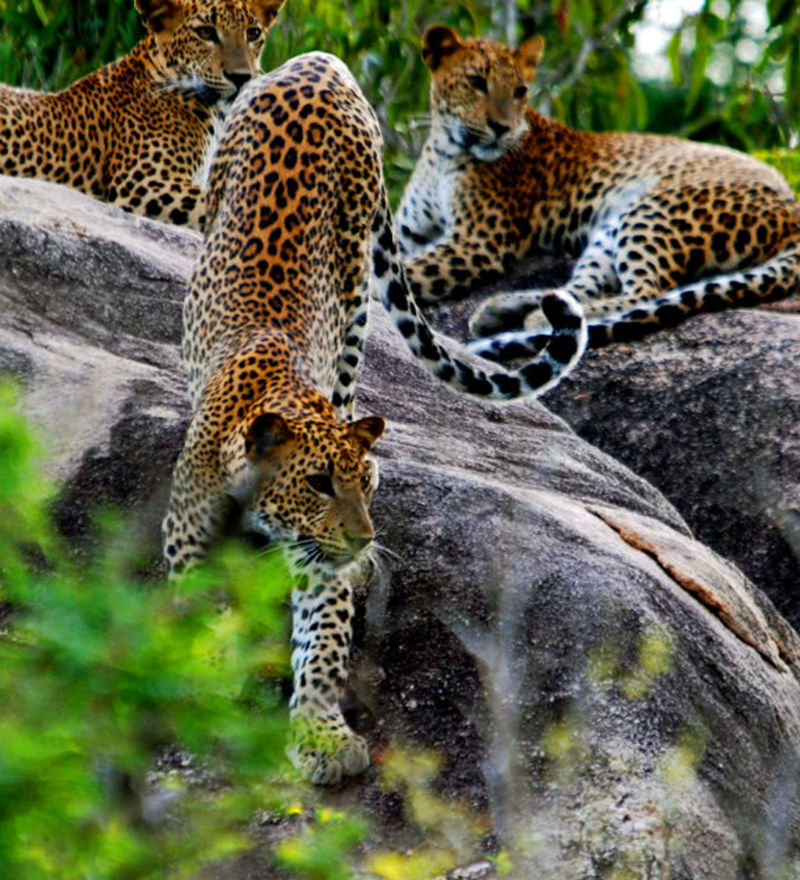WILPATTU NATIONAL PARK
Experience the wonders of a jungle safari at Wilpattu National Park – the largest and one of the oldest National parks in Sri Lanka. With over 30 species of mammals and an impressive variety of flora and fauna spanning its jungles and nature trails, a visit here is definitely something to remember for a lifetime. The name Wilpattu essentially means a land of many lakes ‘villus’ or water bodies and this is exactly what you’ll find here.
Where is Wilpattu National Park located?
Wilpattu lies inland on the northwest coast of Sri Lanka, approximately 26 km north of Puttalam and 185 km north of Colombo. It spans towards the ancient capital of Anuradhapura. The park spans the border of North Central and North Western Province of Sri Lanka and covers an impressive 131, 693 hectares, making it the largest national park in the country! The west border of the park stretches 35 km along the north-western coast of Sri Lanka. Wilpattu was declared as a wildlife sanctuary in 1905, and was upgraded to National Park status on 25th February 1938. Wilpattu is bounded to the north and south by 2 main rivers, the Modara Gamaru towards the north of the park and the Kala Oya to the south of the park.
When is the best time to visit Wilpattu National Park?
What is the landscape like at Wilpattu National Park?
What fauna can be found in Wilpattu National Park?
What flora can be found in Wilpattu National Park?
WILD LIFE IN WILPATTU
The biggest draws in Wilpattu are Leopards and Sloth bears. Alongside these, it is possible to see Asian Elephants, Spotted Deer, Barking Deer, Wild Pig, Asiatic Buffalo and Mugger Crocodiles. Endemic birds include the Ceylon Jungle fowl, Brown-capped Babbler, Ceylon Woodshrike and Black-capped Bulbul in riverine habitats. Muntjac or Barking Deer are more easily seen in Wilpattu than any other national park. Butterflies include the Great Eggfly, Great Orange Tip, Glad-eye Bushbrown, Blue Mormon, Common Mormon, Common Rose and Crimson Rose. The main draw in Wilpattu is the leopard and sloth bear.
CULTURAL SIGNIFICANCE OF WILPATTU
Wilpattu is not only famous for its wildlife but also for its archaeological and historical importance. About 500 years before the birth of Christ it is believed that Prince Vijaya from India and his followers landed in a place called Thambapanni in the North West corner which is now known as Kudrimalai Point (Horse Point). It was here that he married Kuweni and thus founded the Aryan Sinhalese population. Queen Kuweni, who is considered to be the mother of the Sinhala race, lived in Kali Villu where you will be able to see the remaining pillars of this ancient palace. History shows that Prince Saliya, the son of King Dutugemunu, lived with Asokamala in Maradanmaduwa in Wilpattu. There are also remains of an ancient harbour between Palangaturai and Kollankanatte. There are still many archaeological ruins and stories to be told about this and many other fascinating historical events that took place within the borders of what we now call Wilpattu.


